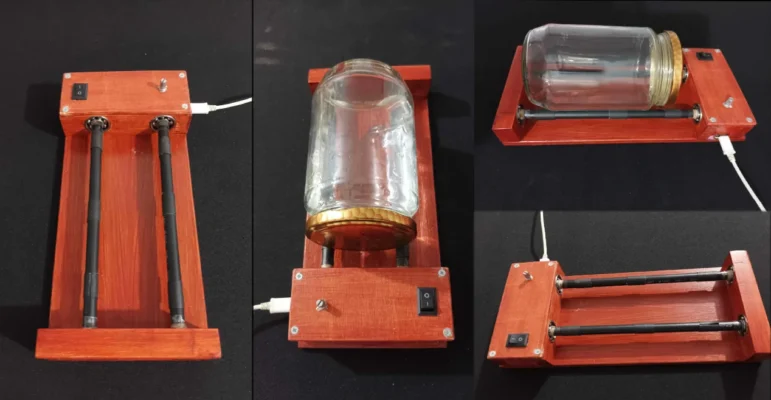Blog
Dmt Extraction
Recognizing the Properties of DMT Extraction
Dmt Extraction, N,N-Dimethyltryptamine, or DMT, is a strong psychedelic that is found in trace amounts in human tissue and in certain plant species. This hallucinogenic substance has long been valued for its capacity to produce deeply altered states of awareness, which are frequently referred to as mystical or transcendental experiences. DMT has been used for centuries in rituals and spiritual practices by indigenous civilizations as a gateway to other realms and dimensions because of its significant impact on perception, cognition, and emotions. Researchers and explorers alike, who are interested in delving into the depths of human awareness and discovering the mysteries of the mind, are drawn to it because of its special qualities and enigmatic charm.
Indigenous tribes have been using it for spiritual and medicinal purposes for ages, but it is also well-known for its psychedelic properties.
Because DMT is categorized as a Schedule I substance in the US, it is forbidden to manufacture, possess, or distribute it.
DMT is a popular drug among academics and anyone looking to achieve altered states of consciousness even with its legal status.
Various Techniques for Extracting DMT
The acid-base extraction method, extraction using non-polar solvents, and other sophisticated processes that have been developed over time are some of the common ways that DMT is extracted from natural sources. Every process has a distinct set of benefits and drawbacks, and producing high-quality DMT extracts requires a certain degree of skill and accuracy. When choosing the best extraction technique, it is crucial to carefully take into account the unique qualities of the plant material being utilized as well as the required purity of the finished product. Improved outcomes and a greater comprehension of the art and science of DMT extraction can be attained by experimenting with various methods and streamlining the extraction procedure.
The ‘acid-base extraction’ method is a popular technique for removing DMT from plant material. It entails utilizing acidic and basic solutions.
An alternative technique is called “extraction with non-polar solvents,” in which DMT is dissolved in a non-polar solvent like petroleum ether or naphtha.
The choice of extraction method depends on a number of criteria, including the required purity of the final product and the availability of ingredients. Each extraction process has different requirements for materials and methods.
Safety Precautions for DMT Extraction
DMT extraction is a potentially dangerous procedure that needs to be handled carefully. It entails dealing with solvents and chemicals, which if not handled correctly, can be hazardous and harmful. As a result, throughout the extraction process, it is imperative to give safety measures first priority. To reduce the chance of coming into contact with chemicals, this involves donning the proper safety equipment, such as lab coats, goggles, and gloves. It’s crucial to use a fume hood or work in a well-ventilated place to avoid breathing in any dangerous fumes that might be generated during the extraction. To ensure a safe and effective extraction procedure, it’s also critical to be fully aware of any potential risks and to take all appropriate safeguards. Never forget that your safety comes first..
Wearing gloves, protective gear, and eyewear is crucial in reducing the possibility of chemical exposure.
To prevent breathing in dangerous fumes, it’s also advised to use a fume hood or work in a location with good ventilation.
In order to avoid mishaps or contamination, it is also essential to handle chemicals and equipment according to the correct protocols.
Legal Issues Associated with DMT Extraction
Since DMT has no recognized medicinal value and a significant potential for abuse, it is categorized as a Schedule I substance in the US. DMT is outlawed nationwide as a result of its stringent classification, which imposes severe limitations on its extraction, manufacture, possession, and distribution. Any of these actions can result in harsh legal repercussions, such as large fines and jail time. People must always abide by the rules and regulations of their local regions or countries and be completely aware of the legal hazards related with DMT extraction. When exploring the realm of DMT extraction, it’s critical to remain knowledgeable and adhere to legal considerations.
This indicates that it is unlawful to extract, produce, possess, or distribute DMT.
Participating in these kinds of acts may lead to harsh legal repercussions, such as fines and jail time.
It’s critical to obey local, national, and international laws and regulations as well as the legal dangers involved.
Advice for a Successful Removal of DMT
It can be difficult to extract DMT successfully, necessitating a thorough comprehension of the complex procedures involved. Through an exploration of the science and art of DMT extraction techniques, aficionados can discover the mysteries of this potent hallucinogenic substance. People may traverse the complexity of extraction procedures and realize the transformative potential of DMT with diligent investigation and attention to detail. By using top-notch plant material, the right tools, and following safety procedures, practitioners can increase the likelihood of a successful extraction. Enthusiasts might set out on a quest to discover the secrets of this hallowed material by combining knowledge, commitment, and awareness for the legal issues surrounding DMT.
The following advice will assist you in doing a DMT extraction successfully:
– Learn about and become acquainted with the selected extraction technique.
Make use of top-notch plant material for extracting.
– Verify that the right tools and supplies are used.
– Adhere to all safety instructions and procedures.
– For future reference, maintain precise records of the extraction procedure.
You can improve your chances of getting a premium DMT extract by paying attention to these pointers.

